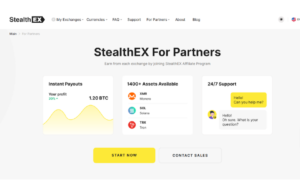Do you want to increase the output of your remote employees as an employer? Or perhaps you’re an employee and wondering how your boss keeps an eye on your job during business hours? This is your lucky day if the answer to any of these questions is yes!
We can assist you in determining whether your home camera is being watched by companies or how they monitor employees who work remotely.
How Do Companies Manage Remote Employees?
Employers who utilize employee activity tracking software such as Controlio can follow and observe their workers’ activities while they are at work. This can occur when employees work remotely or in offices. The primary goals of monitoring are to increase productivity, make sure that everyone abides by business policies, and maintain a safe and effective work environment.
These are the techniques they use to monitor remote employees:
Utilizing Software for Employee Monitoring
Some firms follow their remote workers with specialist employee monitoring tools. You can check Forbes’ list of the best employee monitoring software to help you decide. Software of this kind can monitor how much time is spent on computers, websites viewed, and apps used. Nevertheless, privacy issues surface, and using such software can be subject to regulatory limitations. Controlio, Veriato Cerebral, ActivTrak, Hubstaff, StaffCop Enterprise, and DeskTime Pro are a few software applications for employee monitoring. These monitoring solutions allow you to keep tabs on your employees’ productivity even if you’re giving them a hybrid work schedule.
Holding Frequent Gatherings
Employers routinely set up one-on-one meetings, team meetings, or planned check-ins to discuss progress updates. By doing this, it becomes easier to keep an eye on workers, respond to issues, and maintain open lines of contact with distant workers. The boundaries between the employer-employee relationship are maintained by this manner. It will work as long as they both respect one another’s workloads and timetables. The majority of employers also favor this since it fosters trust between the two parties.
Employing Tools for Project Management
Employers can assign projects, create deadlines, and track progress using project management software such as Jira, Asana, or Trello. Everyone can observe what chores are being taken on and completed thanks to these platforms.
Working together with coworkers and managing all project tasks without switching between apps is possible with a project management tool. You can view the tasks at a glance, as well as who is responsible for what and what has already been completed.
Making Use of Time Monitoring Software
Applications for tracking time such as Controlio, TimeCamp, and Toggl Track are useful tools for monitoring your working hours. These tools frequently offer clock-in and clock-out, hourly tracking, and project progress monitoring functions. Reminding staff members to record their hours can be akin to herding animals in the workplace. Manual timesheets can result in issues such as time theft, excessive overtime, and dishonesty.
VPN and Network Monitoring
Virtual Private Networks (VPNs) are widely used by businesses to securely access company networks from a distance. Employers can monitor the whereabouts of distant employees by using VPNs. To ensure you’re connected when you should be working and that you’re safely accessing company resources, your employer may examine VPN logs and network activity.
Monitor Productivity in Remote Work With Caution
Employers monitor remote employees in order to support the expansion of the remote business. But if you ever want to do this, go with caution. Strike a balance between protecting employees’ privacy and productivity tracking. Speak candidly with staff members before using monitoring software, obtain permission as necessary, and abide by the law.



































